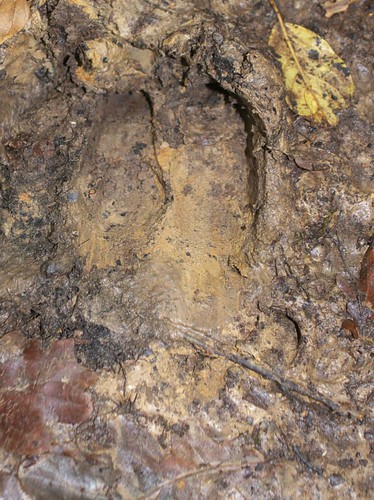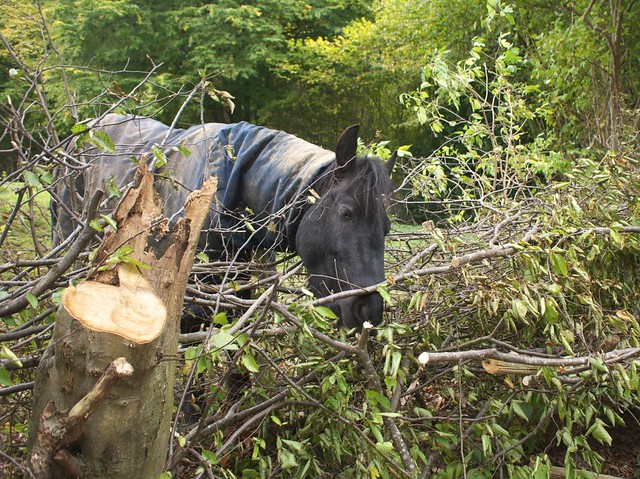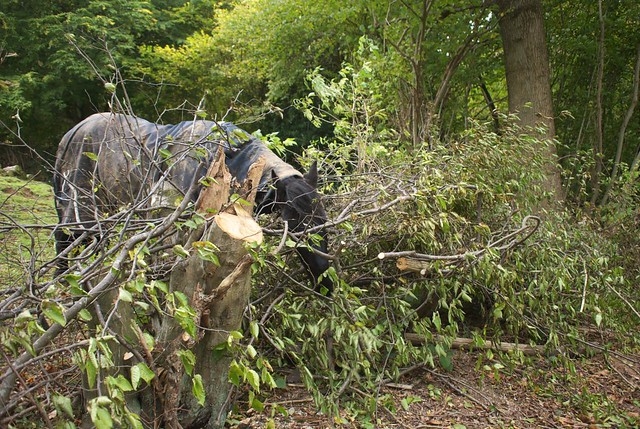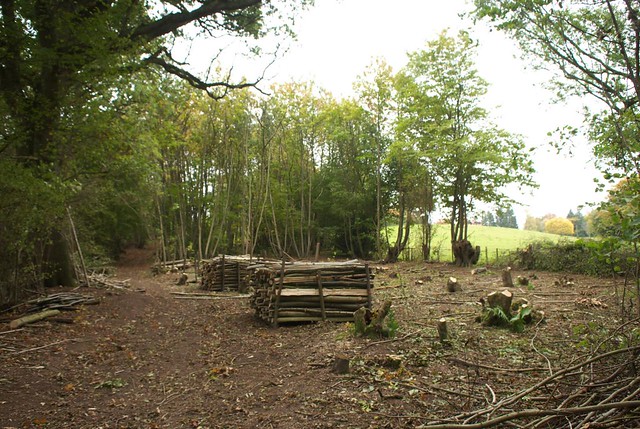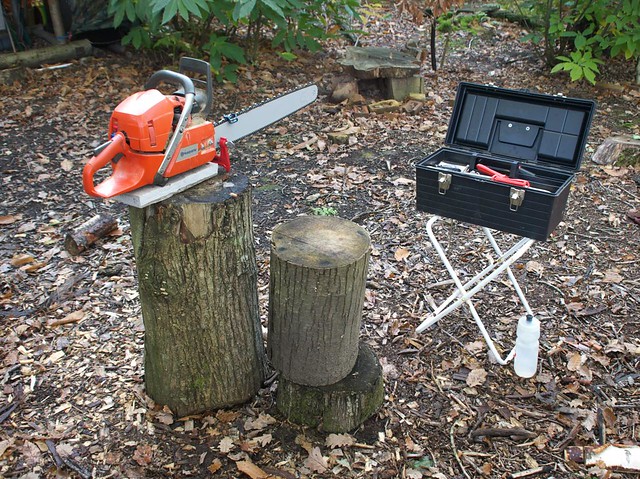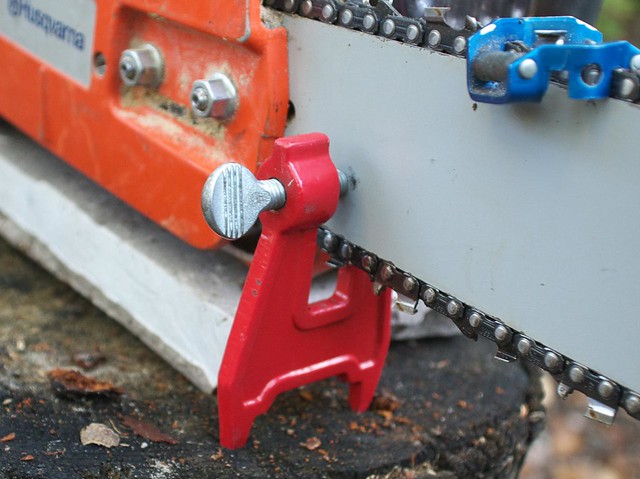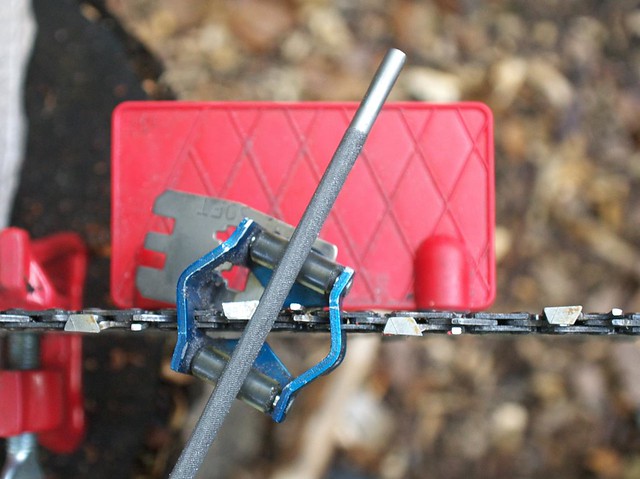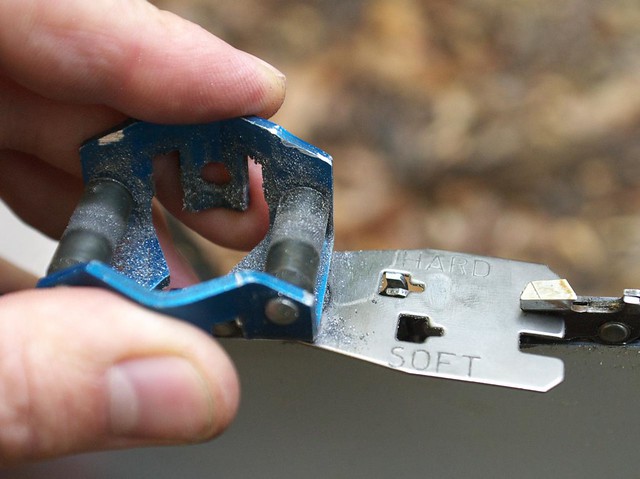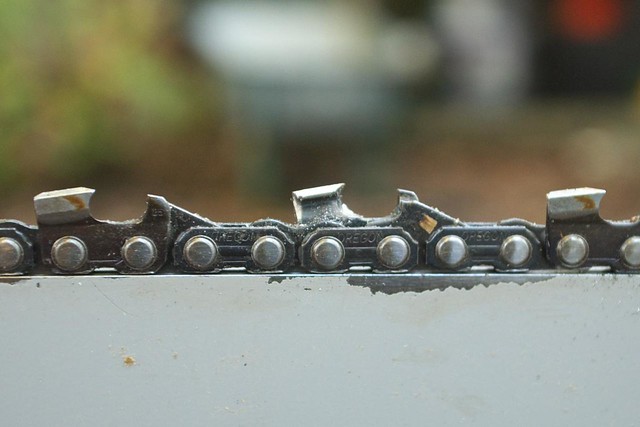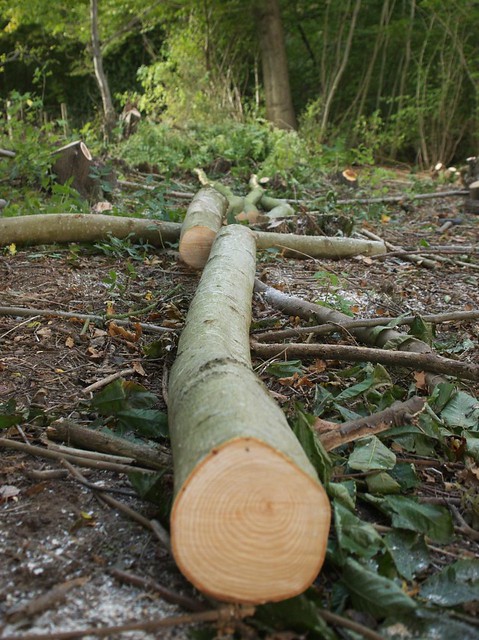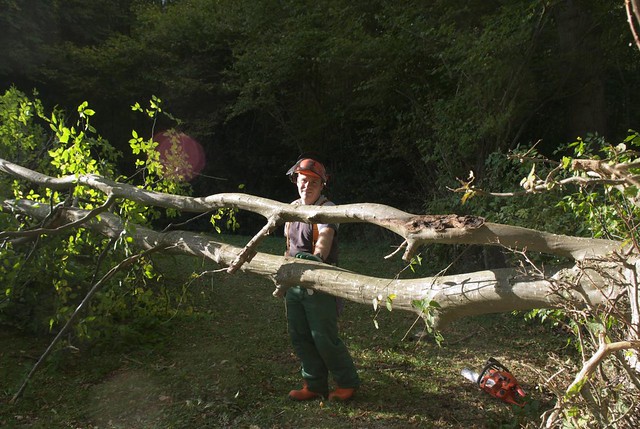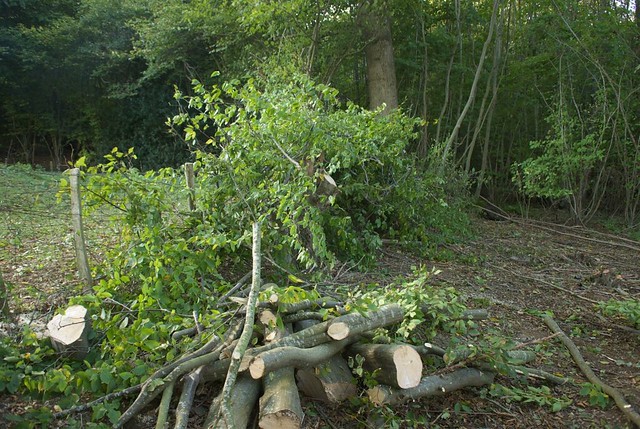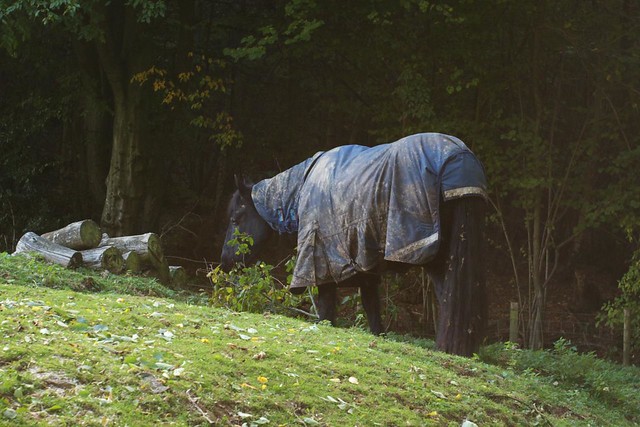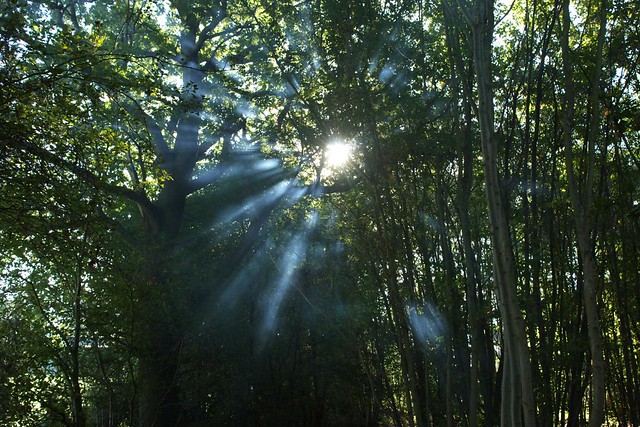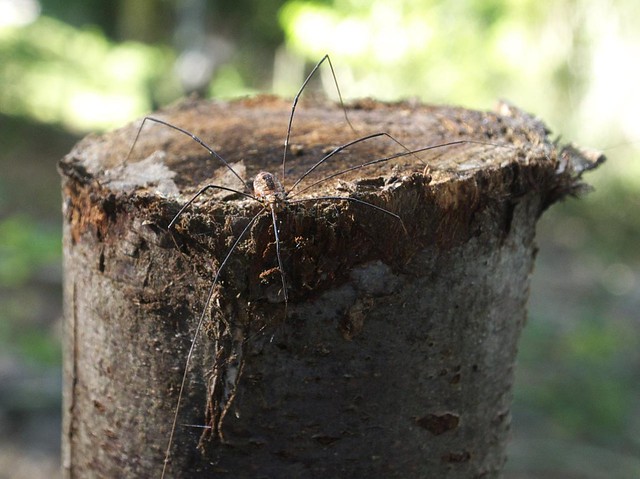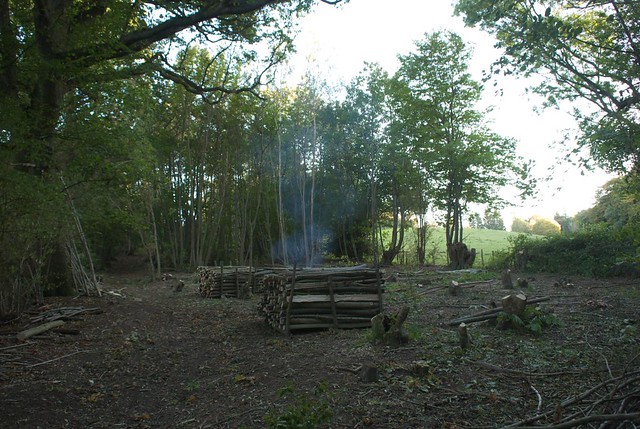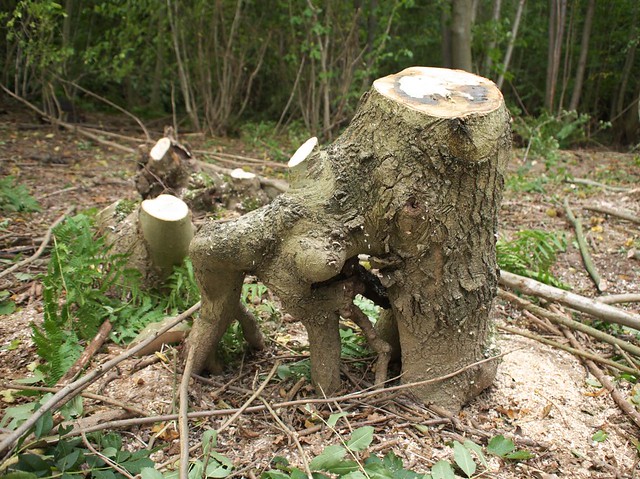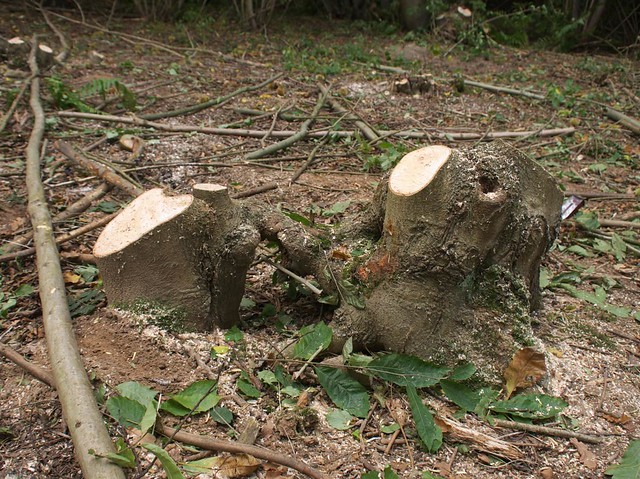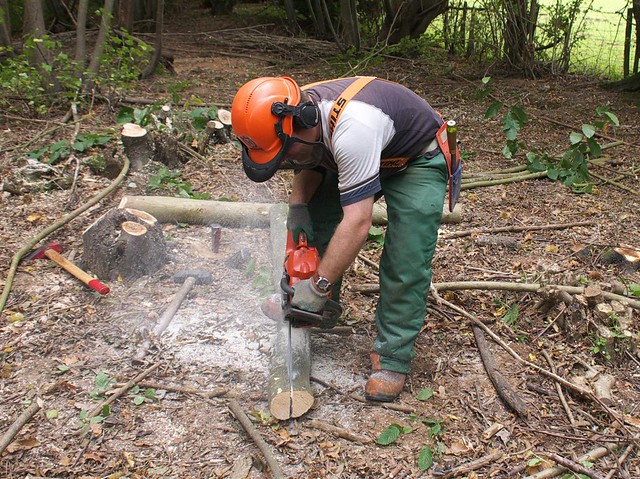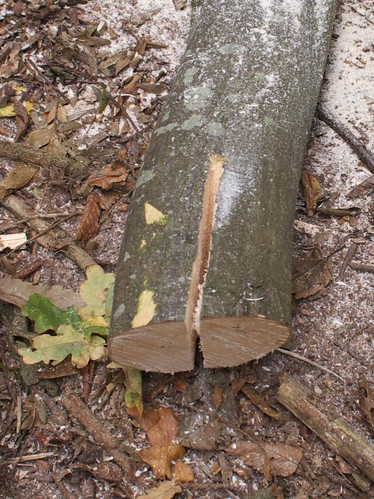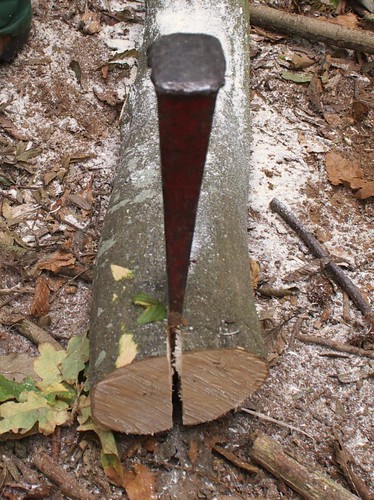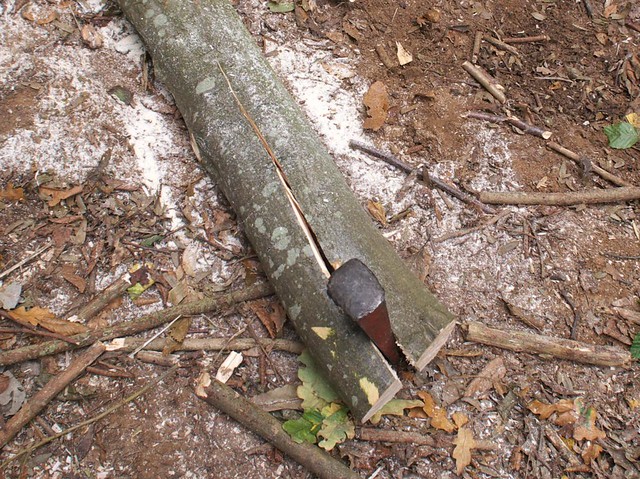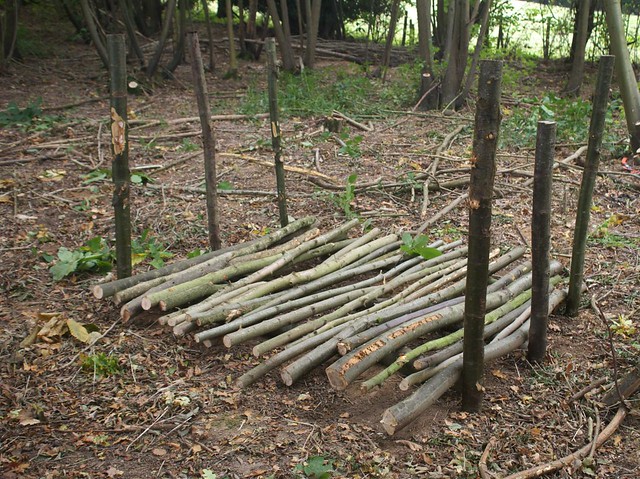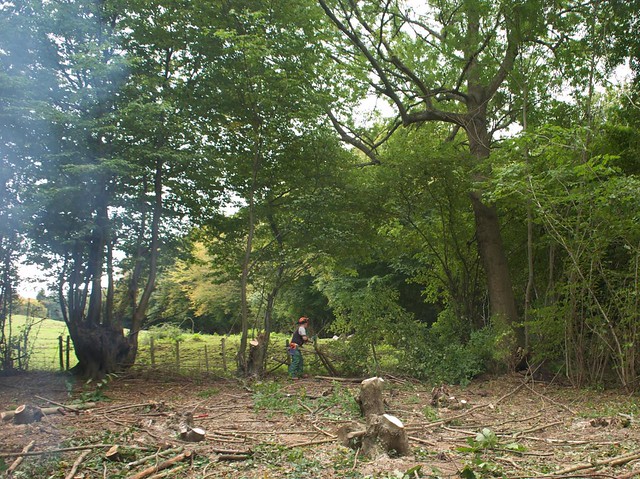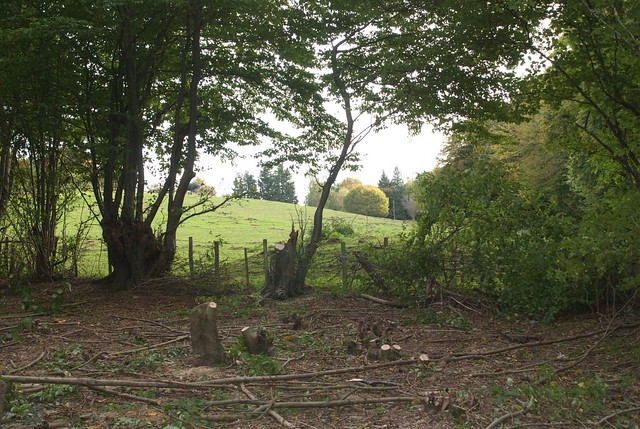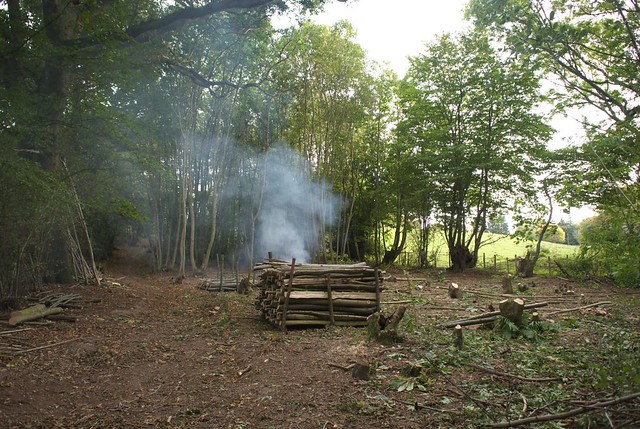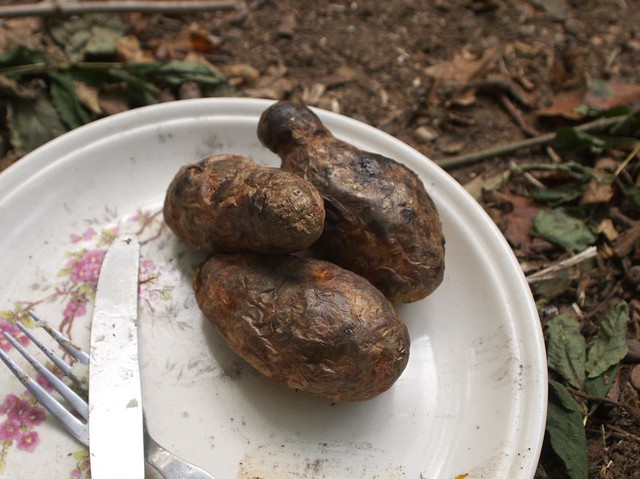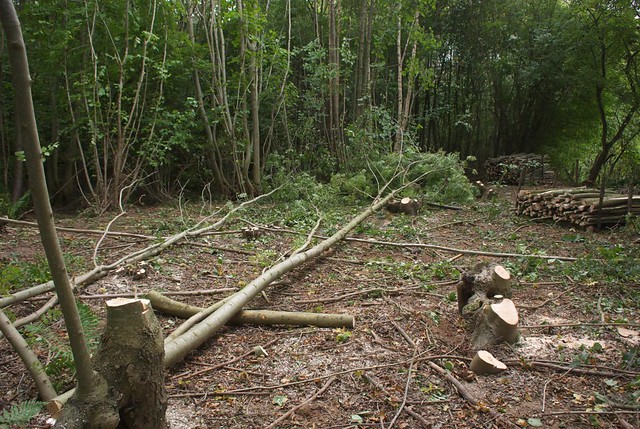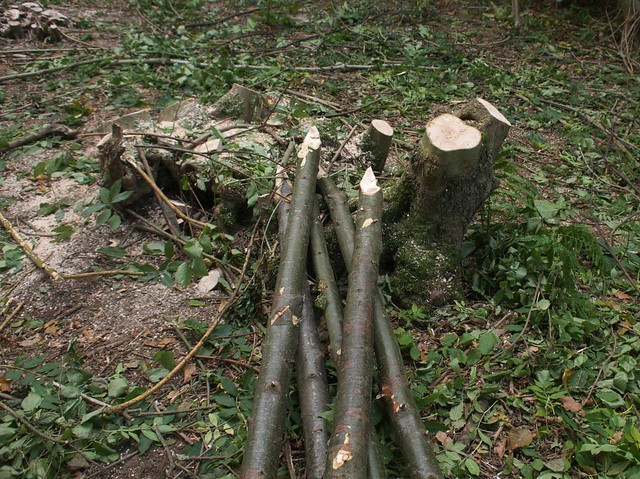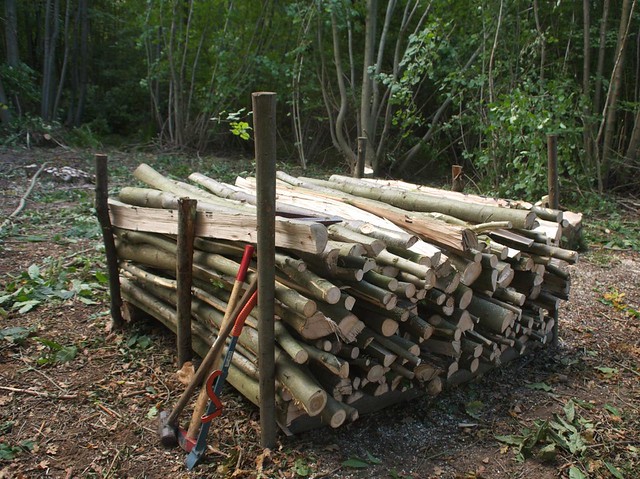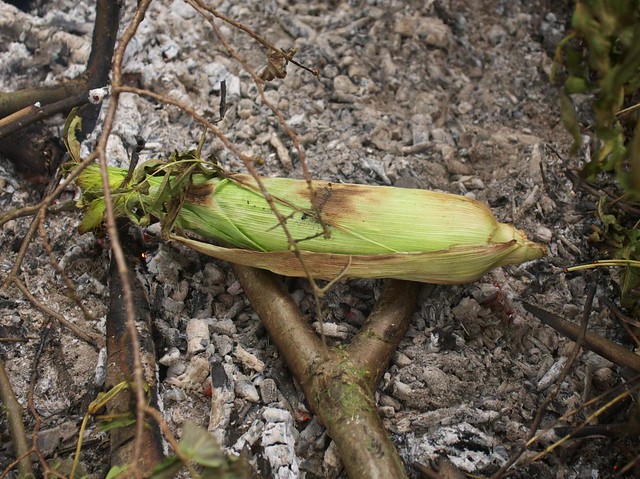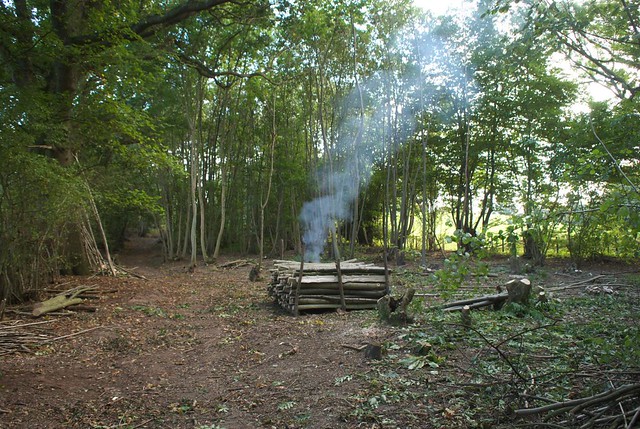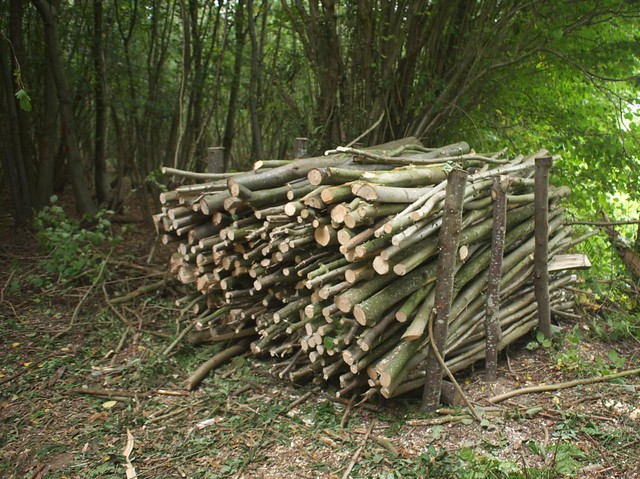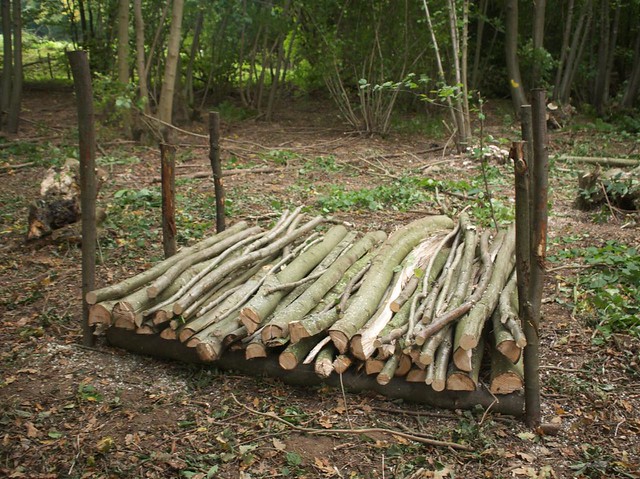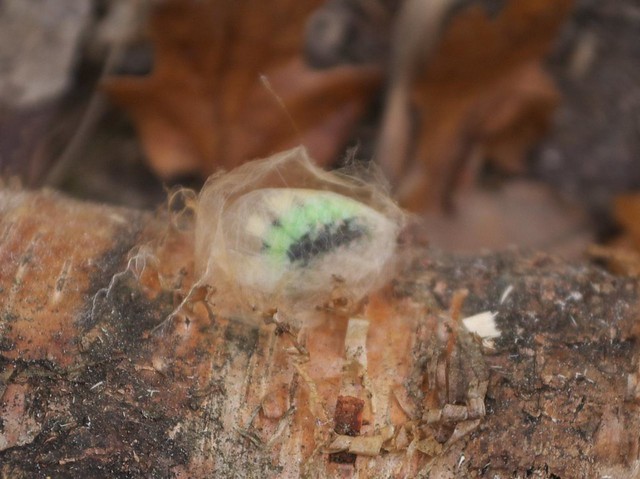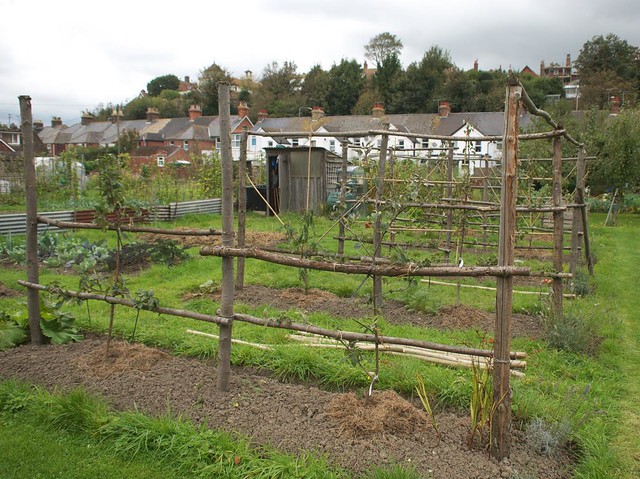The first task when starting coppicing a new part of the woods is "breaking in", or creating a space into which you can fell trees. Obviously you start by taking out all the small trees in the area that you can, which this year means Hazel for us. Having done that, it's inevitable that you have to fell some larger trees that will hang up in other trees. However, you can often find gaps between other trees to fell into, if you're accurate with your chainsaw.
We're coppicing a strip between two fields this winter, and the picture below shows the lower edge of this strip. The trees to the right of the photo are staying. As you can see in the foreground, I've already felled some smaller Ash, which were relatively easy to slot between other trees as they came down. The two remaining Ash stems (about 40ft tall), left of centre, are leaning away from me as I took this picture, and there's a large oak behind me, so they can't come back this way. So, you'll see that to the back of the picture (just beyond my chainsaw) I've felled two Chestnut stems (they came towards the front of the picture). This created a nice space to fell the Ash into:
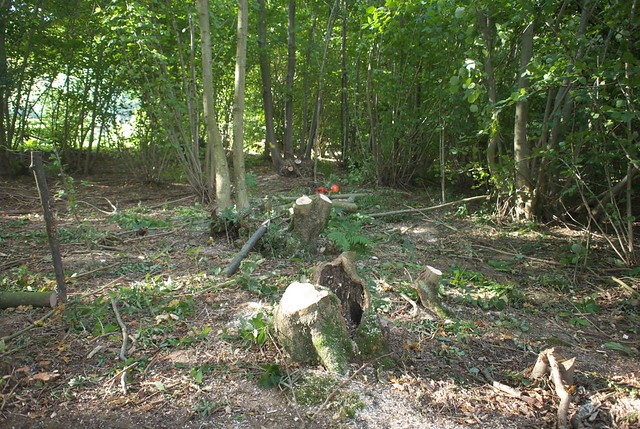
This "breaking in" is actually quite good fun, as it's a bit like figuring out a puzzle, and if you get it wrong then you pay by it taking longer to solve!
In this case I got it right, and each stem yielded a nice pile of logs like this:
The big chunk on top is for a wood-working friend, who'll season it and use the heartwood to make tool handles.
It feels like we're starting to make some visible progress now, after spending a while setting up log racks and collecting pieces for use at an allotment (more on that later...). Here's a picture of the area at the start:
And here's a picture at the end of Friday:
We've already filled one log rack:
and built another which is only just started - if you're wondering why the stakes are all different heights, it's because we're reusing old ones from last year, but not all were in good enough shape, so there's a mix of heights:
I also collected a few sacks of firewood from our store while I was up there - we do this on most trips to save diesel. There was one log I had to leave there though, as it had a caterpillar in a chrysalis on it:
I'm not sure if it's meant to look like that, but I've put it in a safe, dry place to wait out the winter.
I stopped work at the woods a bit early and went to the allotments, where I was putting in Chestnut stakes for a friend there:
I also dropped off some Hazel poles to make a lattice between them. When they're done they'll look a bit like these:
They're ones we put in about 18 months ago, and I think they look a lot better with fruit trees growing up them!
Mike
Click here to read the rest of this post.

